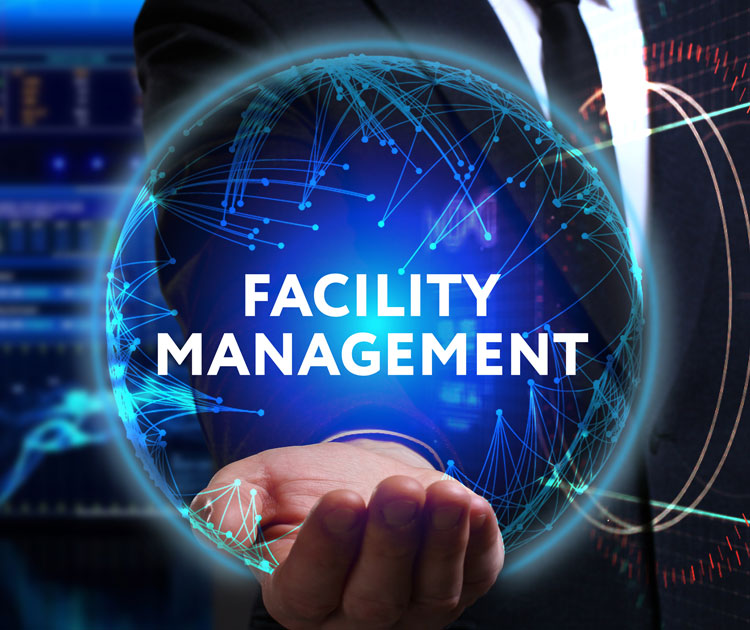Why Total Facility Management Is Important for Today’s Enterprises
Why Total Facility Management Is Important for Today’s Enterprises
Blog Article
Leading Benefits of Total Facility Management for Streamlined Operations
Total Facility Management (TFM) stands for a calculated method to improving operational efficiency by incorporating various services, such as maintenance and safety and security, under a unified management structure. The concern continues to be: what particular benefits can companies harness from taking on TFM, and just how might these advantages transform their functional landscape?
Improved Operational Effectiveness
Enhanced operational performance is a main benefit of executing total facility management (TFM) methods. TFM includes a thorough strategy to taking care of a center's sources, procedures, and framework, ultimately enhancing operations. By settling various services-- such as upkeep, cleaning, area, and protection management-- TFM enhances and lessens redundancies coordination among various functional features.
The assimilation of technology additional amplifies this effectiveness. Advanced facility management systems supply real-time information analytics, enabling facility supervisors to make informed decisions that enhance operations and resource allowance. Anticipating upkeep methods, for example, expect tools failures before they happen, decreasing downtime and prolonging asset life-span.
Furthermore, TFM advertises standard processes throughout different divisions, making sure consistency and quality in solution shipment. This harmony reduces functional interruptions and promotes a more joint workplace. Therefore, employees can concentrate on their core obligations, driving productivity and enhancing total performance.

Price Decrease and Financial Savings
Executing total facility management (TFM) not just enhances functional performance yet also significantly adds to cost decrease and financial savings. By consolidating numerous services under a single management framework, companies can get rid of redundancies and improve procedures, consequently decreasing functional expenses. TFM makes it possible for far better procurement approaches, enabling firms to negotiate bulk investing in arrangements with providers and company, resulting in lower costs.
In addition, TFM highlights precautionary upkeep, which minimizes unanticipated breakdowns and expands the lifespan of essential devices. This aggressive strategy not just lowers repair work prices however additionally boosts the dependability of facilitiess, making certain undisturbed operations. In addition, power performance campaigns, usually an essential focus of TFM, cause considerable cost savings on utility expenses, as facilitiess are optimized for minimized power intake.
Improved Resource Management
Efficient resource management is a cornerstone of total facility management (TFM), making it possible for organizations to enhance using their assets and workforce. By applying TFM methods, organizations can thoroughly examine their resource appropriation, guaranteeing that every asset is used effectively and successfully. This alternative method enables the identification of underperforming sources and the capacity for reallocation or enhancement.
On top of that, TFM promotes the integration of innovation for real-time surveillance of sources, which helps in anticipating maintenance demands and stopping pricey downtime. By leveraging data analytics, Check This Out organizations can make educated choices concerning resource release, ultimately boosting efficiency and lowering waste.
In addition, TFM promotes a society of constant enhancement, motivating groups to consistently assess and fine-tune their resource management techniques. Total Facility Management. This proactive stance not only lessens functional disruptions however additionally cultivates technology, as employees are equipped to suggest renovations based on their direct experiences with source application
Streamlined Interaction Channels
In total facility management, structured interaction channels play a vital duty in cultivating collaboration and performance across teams. Efficient interaction makes certain that all stakeholders, including facility managers, maintenance personnel, look at this now and solution providers, are aligned with organizational goals and functional demands. By developing clear lines of interaction, groups can swiftly address issues, share updates, and carry out options, therefore decreasing downtime and boosting productivity.
With centralized interaction systems, details is conveniently obtainable, enabling real-time updates on upkeep demands, source allowance, and task timelines. This openness not only decreases misunderstandings however also empowers employees to make informed choices promptly. Structured interaction assists in better coordination throughout emergencies, guaranteeing that all personnel are educated and can respond promptly.

Raised Emphasis on Core Activities
An essential benefit of total facility management is the increased concentrate on core activities, permitting companies to focus on their primary company goals - Total Facility Management. By contracting out non-core features such as upkeep, protection, and cleansing, companies can redirect their sources and power in the direction of calculated campaigns that straight add to their competitive advantage and growth
Total facility management incorporates different operational tasks under a single umbrella, fostering efficiency you could look here and minimizing redundancy. This combination not only streamlines procedures yet likewise enhances accountability, ensuring that every aspect of the facility operates harmoniously without diverting focus from what genuinely matters-- core service functions.
Additionally, this method enables staff members to commit their effort and time to tasks that drive technology and boost client satisfaction, as opposed to obtaining slowed down by operational obstacles. With a reputable facility management partner handling daily operations, companies can accomplish greater dexterity, respond promptly to market modifications, and keep a sharper concentrate on their mission.
Inevitably, increased emphasis on core tasks causes boosted overall efficiency, allowing organizations to reinforce their market setting and accomplish their tactical objectives more efficiently. - Total Facility Management
Verdict
In conclusion, Total Facility Management significantly enhances operational effectiveness by settling essential services and leveraging information analytics for informed decision-making. Cost decreases and boosted source management add to general cost savings, while structured communication channels foster partnership among stakeholders.
Total Facility Management (TFM) represents a tactical method to improving operational efficiency by incorporating numerous solutions, such as maintenance and safety and security, under a unified management framework.Enhanced functional performance is a main benefit of executing total facility management (TFM) techniques. Advanced facility management systems offer real-time data analytics, enabling facility supervisors to make educated decisions that boost process and resource allocation.Carrying out total facility management (TFM) not only boosts functional effectiveness but additionally dramatically contributes to set you back decrease and savings.Reliable source management is a keystone of total facility management (TFM), enabling companies to optimize the usage of their possessions and workforce.
Report this page